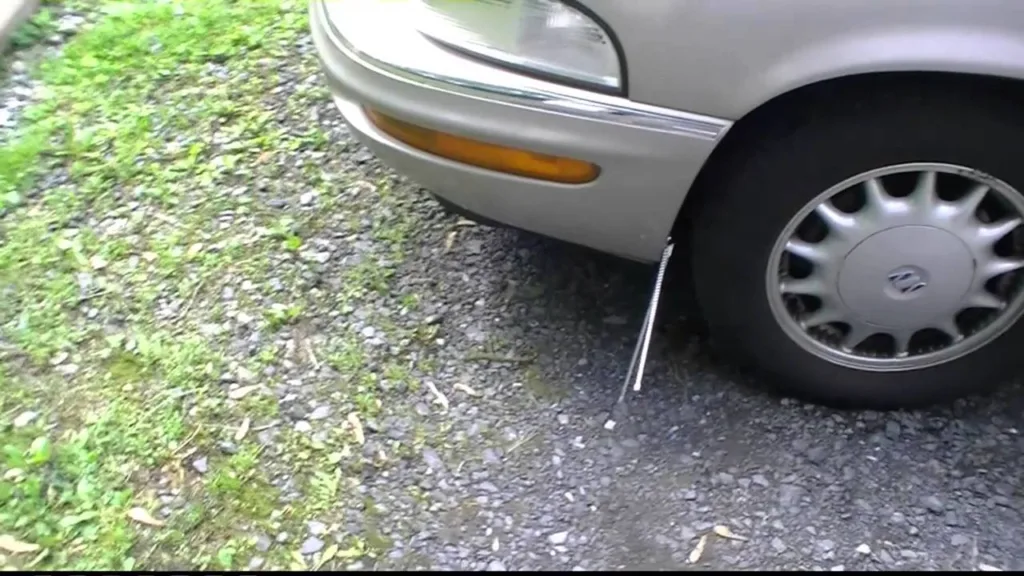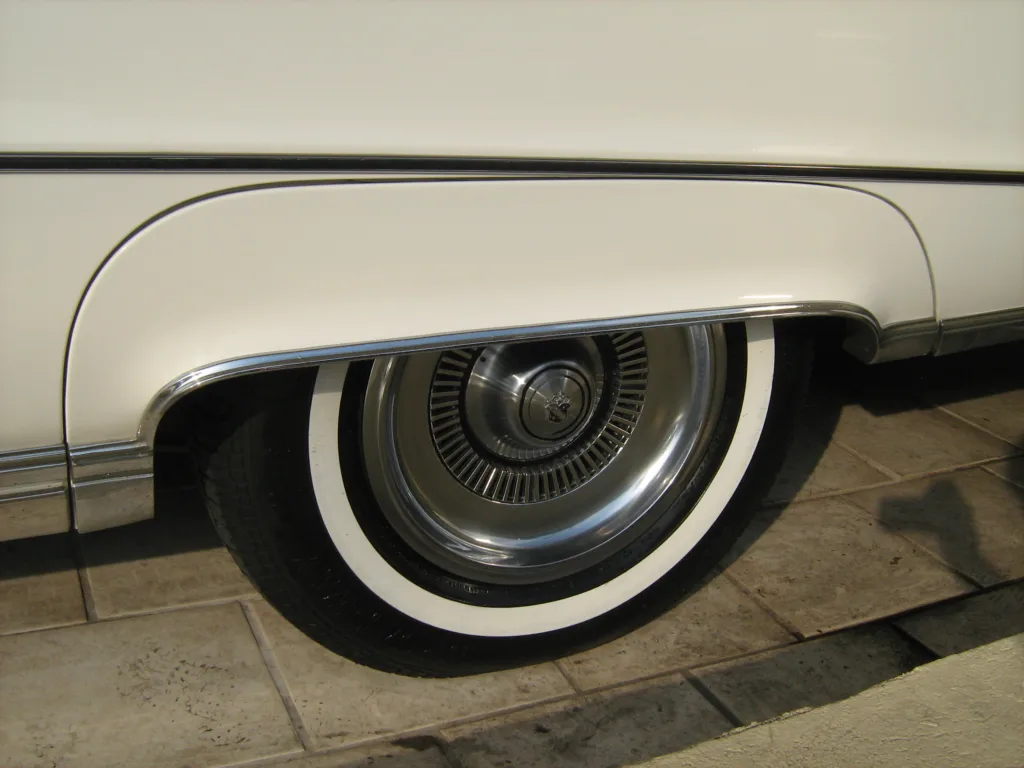Curb feelers have been around since the 1950s and are a great tool for drivers who want to make sure they’re parking their cars correctly. They’re springs or wires installed on a vehicle that act as “whiskers” to alert drivers when they’ve reached the right distance from the curb. When drivers are too close, these whiskers make a racket, thus alerting them to back up and make more room.
Curb feelers were originally created for those with white wall tires so they could avoid messing them up by getting too close to the curb. However, even if you don’t have white wall tires, curb feelers can still be beneficial in helping you park accurately without having to guess how far away from the curb you should be. Plus, it takes away some of the stress of parking in tight spots!
Installing a set of curb feelers is pretty simple—all you need is an adjustable wrench and some basic tools. First, locate the right place on your car to attach them—usually near the front wheel wells. Then, unscrew the bolts and attach each wire or spring to its respective bolt hole. You may need to adjust them slightly after installation so they fit snugly against your car and won’t rattle when driving.
If you want to take your car-parking skills up a notch, consder installing a set of curb feelers on your vehicle today! Not only will it save you time when parking in tight spaces but it will also help protect your car from potential damage caused by getting too close to the curb.
The Function of a Curb Feeler on a Car
A curb feeler, sometimes called a curb finder, is a device installed on the underside of a car that helps drivers to park accurately. It consists of a spring or wire which acts as an “alerting whisker”, gently brushing against the curb when the car approaches it. This provides an audible and tactile warning to the driver that they are close to the edge of the curb and should stop. The use of curb feelers can reduce the risk of damage to wheels or tires from hitting or scraping against curbs.

The Purpose of Curb Feelers on Old Cars
Old cars had curb feelers as an added safety feature. They were metal rods or wires that stuck out from the side of the car’s tires and made a rattling noise when it got too close to a curb or other obstruction. This gave drivers an audio warning to help them stay in their lane and avoid potentially damaging their tires, or worse, scraping or denting the car’s bodywork against a wall or another object. Curb feelers were especially ueful on cars with white wall tires, which were popular in the early part of the 20th century. The wide rim of these tires made it difficult for drivers to judge their distance from curbs and other obstacles, so having a physical warning system was invaluable.
The Introduction of Curb Feelers
Curb feelers were invented by Olas Pitt in 1957 and patented in the United States the same year. The patent for the curb feeler was filed on November 12, 1957.
The Effects of Curbing a Car
Yes, curbing your car can cause a lot of damage. The impact of running over a curb can cause the suspension to misalign, which can lead to excessive tire wear or even blowouts. It can also damage tires and rims, as well as the wheel bearings or axles. In addition, it can scrape the bottom of your car and disconnect linkages and cables from the transmission case housing itself, potentially damaging transmission fluid and cooling lines, busting open your oil pan, or even breaking off the valve entirely.
The Impact of Hitting a Curb on Vehicle Alignment
Yes, hitting a curb can affect alignment. When your car hits a curb, the impact can cause a misalignment of the car’s suspension and wheel angles. This misalignment can cause the wheels to be out of sync with each other and cause the car to pull to one side or the other. In addition, the tires may wear unevenly, the sidewalls may become damaged or bent rims may result from hitting a curb. To rectify these issues, a professional wheel alignment is recommended.

The Short Lifespan of Automobiles: Why Are Cars Built To Crumble?
Cars are designed to crumple because it helps to protect the occupants in the event of a collision. By absorbing some of the kinetic energy generated by the impact, crumple zones reduce the amount of force that is transmitted to the occupants, thus reducing ther chance of serious injury or death. The crumple zone also helps to spread out the energy of the impact over a larger area, dissipating it more quickly and allowing for a safer outcome. Additionally, crumple zones can help to “direct” the energy away from weaker parts of a vehicle, such as its roof or side windows, and towards stronger parts like its frame and engine bay.
The Effects of Impact on Cars
Cars are designed to crumple on impact in order to absorb and dissipate some of the energy from a collision. This helps to reduce the severity of the force that is transferred to the vehicle occupants, thereby reducing their risk of injury. The crumple zones of a vehicle help to spread out the forces of an impact over a larger area, resulting in less concentrated forces and less damage to both the vehicle and its occupants. Additionally, crumpling allows for a longer deceleration time which further reduces the average force experienced by passengers during a crash.
The Effects of Bumpy Roads on Highways
Cars can get bumpy on highways for a variety of reasons. One of the most common causes is uneven pavement. Over time, roads can become worn down, leaving ruts and bumps in the asphalt. This can cause cars to experience a bumpier ride, especially at higher speeds. Additionally, highways often have expansion joints wich are designed to accommodate shifts in temperature and climate. If these joints become loose or broken, they can cause cars to vibrate and bounce as they pass over them. Another possible cause is improperly inflated tires. Low tire pressure can result in an uncomfortable ride, as well as increased wear on the tires themselves. Finally, bad shocks or struts can also contribute to a bumpy ride, as they are responsible for absorbing energy from the ground and providing a smooth transition from one obstacle to another.
The Purpose of Fender Skirts on Old Cars
Many classic cars featured fender skirts to provide both aesthetic and aerodynamic benefits. The skirts helped to create a smooth, uninterrupted flow of air over the bodywork and reduce drag, making them especially useful for long-distance touring. Additionally, by enclosing the rear wheel wells, they added to the sleek look of the car while shielding the passenger compartment from dirt and debris kicked up by the rotating tires. The skirts were often detachable in order to make it easy to change tires or install snow chains.

The Boxy Design of Cars in the 1980s
In the 1980s, car designs were heavily influenced by the aerodynamics of the time. As a result, cars tended to be more boxy and angular in shape in order to reduce drag and improve fuel efficiency. This was particularly true of luxury sedans, which were not designed for speed or performance but rather for comfort and practicality. Furthermore, the use of plastic body panels was becoming more common durng this period, as it allowed for a smoother aerodynamic shape without sacrificing strength or durability. For example, many cars from this era featured plastic bumpers and wheel arches which helped to reduce drag and improve fuel economy without adding weight or compromising safety features. Ultimately, this boxy style was a product of its time as manufacturers worked to find ways to balance form with function.
The Invention of the Curb
The curb was invented for a variety of reasons, primarily as a means of delineating the edge of the pavement to separate the road from the roadside, as well as to discourage drivers from parking or driving on sidewalks and lawns. Additionally, curbs provide structural support to the pavement edge and can be used to channel runoff water from rain or melted snow and ice into storm drains. Finally, they can also help provide additional safety by forcing vehicles to slow down when approaching crosswalks or other areas with high pedestrian traffic.
Conclusion
In conclusion, curb feelers are an important and useul tool for cars. They alert drivers when they are getting too close to the curb during parking, helping to avoid damage to vehicle tires. Curb feelers were originally designed in the 1950s by Olas Pitt of Paducah, Kentucky and have become a popular accessory for classic cars with white-wall tires. They are installed on the vehicle’s wheels, acting like “whiskers” and making a racket when the car gets too close to the curb. Curb feelers provide an additional layer of protection for vehicles, making them an invaluable asset for any car owner.
